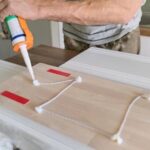Cypress has been gaining increasing popularity in the world of woodworking, thanks to its versatility and unique characteristics. This article will delve into the various aspects of working with cypress wood, highlighting its potential benefits and aesthetic appeal. Whether you are a seasoned woodworker or just getting started, understanding the origins, properties, and applications of cypress can open up a whole new world of possibilities for your woodworking projects.
Cypress has long been prized for its natural qualities that make it an excellent choice for woodworking. Originating from different regions around the world, cypress wood is known for its durability, resistance to insects, and stability. These inherent qualities make cypress an attractive option for both indoor and outdoor projects that require strength and longevity.
Beyond its functional attributes, cypress also boasts stunning aesthetic features that enhance the overall look of any woodworking project. The distinct grain patterns and color variations of cypress wood lend it a unique beauty that stands out among other types of lumber. Whether you are creating furniture pieces or intricate decorative items, using cypress can add an element of visual interest and sophistication.
In the following sections of this article, we will take a deeper dive into the origins and properties of cypress wood, explore different woodworking techniques and finishes specifically tailored for working with cypress, discuss its applications in various environments, consider sustainability factors related to sourcing cypress wood ethically, and showcase inspiring projects that incorporate this versatile material. By the end of this article, you will have a comprehensive understanding of whether cypress is the ideal wood for your woodworking endeavors.
Let’s embark on this journey together.
Understanding the Origins and Properties of Cypress
Cypress wood has a long history and is widely known for its unique properties that make it an attractive choice for woodworking projects. Understanding the origins and properties of cypress can help woodworkers appreciate its value and versatility in their craft.
Cypress trees are native to various regions around the world, including North America, Europe, and Asia. They thrive in wet and swampy environments, which is reflected in their distinct characteristics. Cypress wood is known for its durability, insect resistance, and stability. These qualities have made it popular not only in woodworking but also in outdoor applications such as decking, siding, and boatbuilding.
One of the key reasons why cypress wood is highly regarded by woodworkers is its natural ability to resist decay. The inherent oils within the wood provide protection against rotting caused by moisture or fungal attacks. This makes cypress suitable for both indoor and outdoor projects that require a material with excellent weather resistance.
In addition to being resistant to decay, cypress wood also possesses exceptional dimensional stability. It has a low shrinkage rate when exposed to changes in humidity or temperature, making it less prone to warping or swelling compared to other types of wood. This property enhances the longevity of woodworking projects made from cypress and ensures that they will maintain their structural integrity over time.
Furthermore, cypress exhibits an attractive grain pattern with color variations that add visual interest to woodworking projects. Its light yellowish-brown hue can develop a rich patina over time when left unfinished or when treated with certain finishes. The combination of these natural qualities makes cypress an appealing choice for furniture making, cabinetry, flooring, and other decorative woodworking applications.
| Property | Description |
|---|---|
| Durability | Cypress wood is naturally resistant to decay, making it long-lasting. |
| Insect Resistance | The natural oils in cypress wood repel insects, protecting against damage. |
| Dimensional Stability | Cypress has a low shrinkage rate, reducing the risk of warping or swelling. |
| Distinct Grain Pattern | Cypress exhibits an attractive grain pattern with color variations. |
| Weather Resistance | It can withstand exposure to weather elements, making it suitable for outdoor projects. |
Exploring the Aesthetic Appeal of Cypress in Woodworking
Cypress wood is not only valued for its durability and strength in woodworking, but it also offers a unique and appealing aesthetic that can enhance the overall look of any project. In this section, we will delve into the visual features of cypress wood that make it a popular choice among woodworkers.
Distinct Grain Patterns
One of the standout characteristics of cypress wood is its distinct grain patterns. The grain can range from straight to interlocking, providing a visually interesting texture to finished projects. The grain pattern of cypress adds depth and dimension to furniture pieces, cabinetry, and other woodworking creations.
Color Variations
Cypress wood possesses a wide range of color variations that can add an element of natural beauty to woodworking projects. The heartwood of cypress tends to be darker in color and ranges from reddish-brown to chocolate brown. On the other hand, the sapwood is lighter in color, often featuring pale yellow or cream tones. These color variations create an attractive contrast when incorporated into furniture or decorative items.
Natural Weathering
Another appealing aspect of cypress wood is how it ages and weathers over time. When exposed to sunlight and outdoor elements such as rain and wind, cypress develops a beautiful silver-gray patina that adds character and charm to exterior woodworking projects like outdoor furniture or decking.
In addition to its unique visual appeal, the versatile nature of cypress makes it suitable for various woodworking styles and designs. Whether you prefer rustic, contemporary, or traditional aesthetics, cypress can seamlessly blend with different interior or exterior design concepts.
Woodworkers who appreciate natural materials would find the distinctive beauty offered by cypress appealing. Its eye-catching grain patterns, color variations, and weathered patina make it an excellent choice for adding warmth and visual interest to any woodworking project.
The Strength and Durability of Cypress in Woodworking Projects
Cypress is known for its exceptional strength and durability, making it a popular choice for woodworking projects. Whether it’s used for furniture, flooring, or outdoor structures, cypress wood has proven to be a reliable material that can withstand the test of time.
One of the key factors contributing to the strength and durability of cypress wood is its natural resistance to decay and insect damage. Cypress contains natural oils that act as a preservative, making it highly resistant to rot and pests. This makes it an excellent choice for outdoor applications such as decks, fences, and pergolas where exposure to moisture and insects is a concern.
In addition to its resistance to decay and insects, cypress wood also possesses natural stability. It has minimal shrinkage or expansion when exposed to fluctuating humidity levels, which contributes to its longevity. This stability makes cypress well-suited for use in climates where there are significant temperature and humidity variations throughout the year.
The combination of these qualities makes cypress an ideal choice for various woodworking projects where strength and durability are essential. From structural elements like beams and posts to smaller pieces such as cabinets or cutting boards, cypress provides the necessary strength while adding beauty to any project.
| Woodworking Project | Advantages of Using Cypress |
|---|---|
| Outdoor Deck | Cypress’s resistance to rot and decay makes it ideal for withstanding constant exposure to weather conditions. |
| Adirondack Chair | Cypress’s strength allows it to support body weight without compromising on comfort. |
| Flooring | Cypress’s stability prevents warping and maintains its appearance even in high-traffic areas. |
| Shelving Unit | The durability of cypress ensures that the shelves can support heavy items without sagging or weakening. |
Working with Cypress
When it comes to working with cypress wood in your woodworking projects, there are a few essential tools that you’ll want to have on hand. Whether you’re a beginner or an experienced woodworker, having the right tools can make all the difference in achieving precise and clean cuts. Here is a list of tools that are commonly used when working with cypress:
- Circular saw: A circular saw with a carbide-tipped blade is ideal for making straight cuts in cypress boards. Make sure to adjust the depth of the blade according to your desired cut.
- Table saw: A table saw is great for making precise and accurate rip cuts in cypress. It allows for greater control and stability when cutting larger pieces of wood.
- Miter saw: A miter saw is essential for making angled cuts in cypress boards. It’s especially useful when creating frames or trim work.
- Router: A router can be used to create decorative edges, dadoes, or grooves in cypress wood. With the appropriate router bits, you can add intricate details and designs to your woodworking projects.
- Chisels: Chisels come in handy when shaping and detailing cypress wood. They can be used to remove small amounts of material or create recessed areas for joinery.
In addition to having the right tools, there are some tips and techniques that can help you maximize the potential of cypress wood in your projects:
- To prevent tear-out when cutting across the grain, use a sharp blade with a high tooth count.
- Consider using a sacrificial board underneath your workpiece when using power tools like routers or circular saws to prevent tear-out or splintering.
- When sanding cypress, start with a coarse grit sandpaper and gradually work your way up to finer grits for a smooth finish.
- Take advantage of cypress wood’s stability by acclimating it to your workshop environment before starting your project. This can help minimize any potential warping or movement.
- When joining cypress pieces, consider using biscuits, dowels, or pocket screws for added strength and stability.
By using the right tools and implementing these tips and techniques, you can unlock the full potential of cypress wood in your woodworking projects. Whether you’re creating furniture, cabinets, or decorative accents, working with cypress allows for endless possibilities.
Cypress Wood Finishes
When it comes to woodworking with cypress, choosing the right finish is essential to bring out its natural beauty and protect the longevity of your creations. Cypress wood finishes not only enhance the aesthetic appeal but also provide a layer of protection against moisture, UV rays, and other damaging elements. In this section, we will explore different finishing options for cypress woodworking projects and provide guidance on selecting the best finish for your needs.
Types of Finishes
There are various types of finishes available for cypress woodworking projects, including stains, oils, and clear-coat finishes. Stains are commonly used to add color to the wood while allowing its natural grain patterns to still show through. They come in different shades and can be applied as transparent or opaque coatings, depending on the desired look.
Oils, such as linseed oil or tung oil, penetrate the wood fibers and enhance its natural beauty without adding much color. These finishes provide a smooth and protective layer that brings out the unique characteristics of cypress wood. Clear-coat finishes, such as polyurethane or varnish, create a glossy or satin sheen while providing excellent protection against water damage and wear.
Choosing the Right Finish
When choosing a finish for your cypress woodworking project, it’s important to consider several factors. First, determine whether you want to preserve the natural color of cypress or enhance it with a stain. If you prefer a more natural look, opt for an oil or clear-coat finish. Additionally, consider whether you need protection against specific environmental factors like moisture or UV rays.
It’s recommended to test different finishes on scrap pieces of cypress before applying them to your actual project. This allows you to see how each finish interacts with the wood’s grain pattern and color variations. Additionally, consider maintenance requirements and the lifespan of the finish to ensure it aligns with your desired level of care and longevity for your woodworking creation.
Tips for Applying Finishes
Proper application of a cypress wood finish is crucial to achieve the desired result. Before applying any finish, ensure that the wood surface is clean, smooth, and free from dust or debris. Sanding the wood with fine-grit sandpaper will help create a smooth surface for the finish to adhere to.
Follow the manufacturer’s instructions carefully regarding application techniques, recommended number of coats, and drying times. It’s advisable to apply multiple thin coats rather than one thick coat to prevent uneven coverage or excessive build-up.
Cypress for Indoor and Outdoor Woodworking
Cypress wood is known for its versatility and durability, making it a popular choice for both indoor and outdoor woodworking projects. This section will explore the pros and cons of using cypress in different environments.
Indoor Woodworking with Cypress
When it comes to indoor woodworking projects, cypress offers several advantages. Firstly, cypress has a natural resistance to insects and decay, which makes it an excellent choice for furniture that will be used indoors. It also has a distinct aroma that adds to the overall ambiance of a room. Additionally, cypress wood can be easily worked with standard woodworking tools, making it suitable for various intricate designs and joinery.
However, it is important to consider the potential drawbacks of using cypress indoors. One downside is that cypress wood can have a higher moisture content compared to other types of hardwood, which may lead to warping or shrinkage if not properly dried or acclimated. It is crucial to properly seal and finish cypress furniture to protect it from any potential moisture damage.
Outdoor Woodworking with Cypress
Cypress excels in outdoor applications due to its exceptional durability and resistance to rot and decay. It is often used in constructing outdoor furniture, decks, pergolas, fences, and siding. This type of wood naturally contains oils that act as natural preservatives against fungal attack and insect infestation. Its resistance to moisture makes it an ideal choice for humid or coastal regions where other woods might deteriorate quickly.
On the flip side, there are a few considerations when using cypress outdoors. While its natural resistance helps protect against decay, regular maintenance such as sealing and staining is still necessary to prolong its lifespan and maintain its appearance. Cypress can also sometimes develop small cracks over time due to changes in humidity or exposure to weather elements. However, these cracks are typically superficial and do not affect the overall structural integrity of the wood.
Environmental Factors
Cypress wood is not only known for its versatility and aesthetic appeal, but also for its environmental sustainability. When using wood for woodworking projects, it is important to consider the impact on the environment. In this section, we will explore the sustainability and sourcing of cypress wood.
One of the key factors that make cypress wood a sustainable choice is its natural abundance. Cypress trees are found in various regions around the world, including North America, Europe, and Asia. These trees have a relatively fast growth rate and can be harvested responsibly without depleting the forests. Additionally, cypress trees have been cultivated in plantations specifically for their use in woodworking, ensuring a renewable and sustainable source of timber.
Responsible sourcing practices are another aspect to consider when working with cypress wood. It is important to choose suppliers who follow ethical practices and adhere to regulations governing forestry and timber harvesting. Look for suppliers who provide certifications such as Forest Stewardship Council (FSC) or Sustainable Forestry Initiative (SFI), as these certifications indicate that the wood has been sourced from sustainably managed forests.
For those concerned about eco-conscious woodworking, there are alternatives to consider when cypress is not readily available or suitable for a specific project. Some environmentally friendly alternatives include reclaimed wood or bamboo, which offer similar characteristics to cypress while reducing the demand on newly harvested timber.
When sourcing cypress wood, it is crucial to prioritize sustainability by choosing reputable suppliers and considering alternative materials when necessary. By making informed choices about where our woodworking materials come from, we can contribute to the preservation of our natural resources and promote a more sustainable future for craftsmanship.
Inspiring Cypress Woodworking Projects and Ideas
Cypress wood is an incredibly versatile material that can be used in a wide variety of woodworking projects. Its natural beauty and unique characteristics make it a popular choice for both functional and decorative pieces. If you’re looking for inspiration for your next woodworking project, here are some ideas that showcase the potential of cypress wood.
- Outdoor Furniture: Cypress is highly resistant to rot, decay, and insect damage, making it the perfect choice for outdoor furniture projects. Whether you’re building a patio set, garden bench, or Adirondack chair, cypress will withstand the elements and maintain its structural integrity for years to come.
- Cabinetry and Shelving: The distinct grain patterns and color variations of cypress make it a visually appealing choice for cabinetry and shelving projects. From kitchen cabinets to bathroom vanities, using cypress can elevate the look of any space while providing durable storage solutions.
- Decorative Accents: Cypress wood is often used to create decorative accents such as trim work, moldings, and paneling. These intricate details can add character and sophistication to any room or piece of furniture.
- Artistic Creations: If you’re feeling particularly creative, cypress can be shaped and carved into unique artistic creations. From sculptures to wall art, the natural beauty of cypress wood can be showcased through intricate designs and patterns.
- Outdoor Structures: Cypress is commonly used in the construction of outdoor structures such as fences, decks, pergolas, and gazebos. Its durability makes it an excellent choice for withstanding weather conditions while providing an attractive addition to any outdoor space.
These are just a few examples of how cypress wood can be utilized in woodworking projects. The possibilities are endless when it comes to this versatile material. Whether you’re a beginner or an experienced woodworker, exploring the potential of cypress can bring new life to your creations.
Remember to always practice proper safety precautions when working with any type of wood, including cypress. Use the appropriate tools and techniques to ensure successful and enjoyable woodworking experiences. With its natural beauty and durability, Cypress is sure to impress in any woodworking project you undertake.
Conclusion
In conclusion, cypress wood has proven to be a highly versatile and appealing material for woodworking projects. Throughout this article, we have explored the origins and properties of cypress, highlighting its natural durability, insect resistance, and stability. Additionally, we have discussed the aesthetic appeal of cypress, showcasing its distinct grain patterns and color variations that can enhance the overall look of woodworking projects.
Not only does cypress offer visual appeal, but it also boasts excellent structural integrity and long-lasting nature. With examples of successful woodworking projects using cypress as a reliable choice, it is evident that this wood can withstand the test of time. Whether you are working on indoor or outdoor projects, cypress offers advantages such as its resistance to decay and rot in wet environments.
Working with cypress requires essential tools and techniques outlined in this article. By following these recommendations and considering different finishing options to protect the wood’s beauty and longevity, you can ensure successful creations with cypress.
While considering the sustainability aspect of sourcing cypress wood is crucial, there are ethical alternatives available for eco-conscious woodworkers to explore. It is essential to promote responsible sourcing practices while indulging in our passion for woodworking.
Ultimately, whether cypress is the ideal wood for your woodworking projects depends on your personal preferences and requirements. However, with its unique characteristics and numerous benefits discussed here, we strongly encourage readers to explore the possibilities that cypress offers in their future endeavors. From enhancing aesthetics to ensuring durability, cypress has certainly earned its place as a favored choice among woodworkers worldwide.
Frequently Asked Questions
How long will cypress wood last?
Cypress wood is known for its exceptional durability and longevity. When appropriately maintained and protected from the elements, cypress wood can last for decades, even in outdoor applications.
This remarkable longevity is due to the natural preservatives present in the wood, such as cypretine and cypressene, which make it highly resistant to decay, rot, and insect damage. With proper care and maintenance, structures or products made from cypress wood can retain their strength and beauty for a considerable period.
Is cypress wood stronger than pine?
Comparing the strength of cypress wood to pine requires consideration of various factors. While both are widely used for construction purposes, cypress wood generally has superior mechanical properties compared to pine. Cypress is known for its high natural density and tight grain structure, resulting in increased strength characteristics.
It has excellent resistance to warping, twisting, and shrinking, making it a preferred choice for durable outdoor projects like decking or siding. Pine, on the other hand, tends to be softer and more prone to dents or scratches. However, it’s worth noting that different species within each type of wood can have varying levels of strength.
Is Cypress a hard or softwood?
Cypress wood falls under the category of “softwood” rather than “hardwood.” Despite this designation, it’s important to clarify that softwoods should not be confused with being inherently weak or less durable than hardwoods.
The distinction between softwoods and hardwoods primarily relates to their botanical classification based on tree anatomy rather than actual hardness or durability. In terms of physical properties, cypress wood possesses several attributes associated with hardwoods – including its high density and resistance to decay – making it an excellent choice for various applications requiring strength and durability.

Hi everyone! I’m a woodworker and blogger, and this is my woodworking blog. In my blog, I share tips and tricks for woodworkers of all skill levels, as well as project ideas that you can try yourself.





